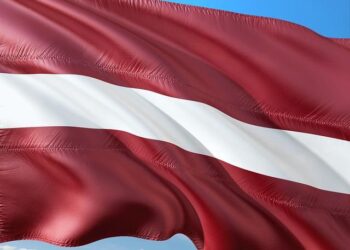LatviaŌĆÖs Strategic Drive to Enhance Pharmaceutical Manufacturing for National Health Security
In a decisive effort to strengthen the countryŌĆÖs health resilience, LatviaŌĆÖs Minister of Health has recently advocated for a significant expansion of the nationŌĆÖs pharmaceutical production capabilities. Addressing stakeholders at a high-profile conference, the Minister highlighted how intertwined health security and national safety have become amid ongoing global uncertainties. With supply chain disruptions and public health emergencies becoming more frequent worldwide, Latvia is positioning itself to reduce reliance on external sources by cultivating a self-reliant pharmaceutical industry. This article explores the Minister’s strategic proposals, evaluates Latvia’s current pharmaceutical sector status, and examines potential impacts on regional healthcare policies.
Building Resilience: Expanding Domestic Pharmaceutical Manufacturing in Response to Global Crises
The recent surge in global health emergenciesŌĆöranging from pandemics like COVID-19 to geopolitical tensions affecting supply chainsŌĆöhas underscored the vulnerability of relying heavily on imported medicines. Recognizing this risk, Latvian authorities are prioritizing domestic drug production as a cornerstone of national preparedness. The government has outlined several key initiatives designed to accelerate growth within local pharmaceutical manufacturing:
- Allocating funds toward advanced manufacturing technologies such as continuous flow chemistry and automation systems.
- Offering tax breaks and grants aimed at encouraging existing companies to scale up their production lines.
- Partnering with universities and vocational schools to develop specialized training programs that cultivate skilled professionals tailored for pharma manufacturing roles.
- Establishing knowledge-sharing collaborations with international pharmaceutical leaders to adopt best practices and innovative techniques.
The Health Minister emphasized that these efforts will not only enhance public health security but also invigorate economic growth by generating employment opportunities and fostering innovation hubs within Latvia. Recent data reveals promising targets set by policymakers:
| Metric | Current Status | Aspirational Goal (by 2030) |
|---|---|---|
| Percentage of Local Medicine Production vs Demand | 25% | 50% |
| Total Number of Pharma Enterprises | 30 | 50+ |
| Total Employment in Sector | 2,000 workers | Aim for over 5,000 workers |
Sustainable Practices: Paving the Way for Eco-Friendly Pharmaceutical Production in Latvia
The push towards expanding local drug manufacturing is coupled with an emphasis on sustainabilityŌĆöa vital component ensuring long-term viability while protecting environmental resources. By integrating green technologies into production processes, Latvia aims not only at securing medicine availability but also minimizing ecological footprints associated with pharma operations.
This sustainable approach includes:
- Sustainable Chemistry Techniques: Adopting methods that reduce hazardous waste generation while optimizing energy efficiency during synthesis processes.
- Biosourced Raw Materials: Utilizing renewable biological inputs instead of petrochemical derivatives wherever feasible within drug formulation stages.
- Circular Economy Models: Implementing recycling protocols targeting both chemical reagents used during manufacture as well as packaging materials post-distribution.
Such environmentally conscious strategies align closely with EU-wide directives promoting green industrial transformation. These measures are expected not only improve medicine accessibility but also stimulate job creation through emerging ŌĆ£greenŌĆØ sectors within pharmaceuticals.< /a>
Moreover, smart manufacturing solutions like IoT-enabled monitoring systems can optimize resource use while maintaining stringent quality controls throughout production cycles.
| Advantages of Sustainable Pharma Manufacturing< /th > | Description< /th > < /tr > < /thead > | |
|---|---|---|
| Benefits from Public-Private Collaboration | Government Contributions | Private Sector Responsibilities |
|---|---|---|
| Accelerated Innovationn t | Provision of funding mechanisms & policy incentivesn t | Conducting R&D activities & technology developmentn ttn tn tn tn tn tn tn //u003ctru003eu003ctd scope=u0022rowu0022u003eEconomic Growthu003c/ntdu003eu003ctd scope=u0022rowu0022u003eInfrastructure support + fiscal benefitsu003c/ntdu003eu003ctd scope=u0022rowu0022u003eMarket expansion + job creation initiatives |















